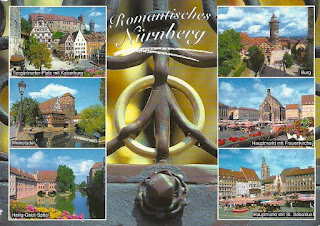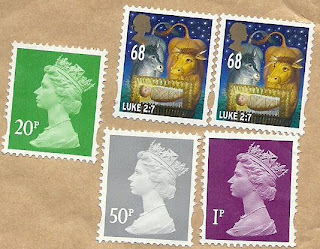
ALBANY, NEW YORK
A bird's-eye view of the city with the many contemporary structures mingling with the historic architecture. Located in the background is the Hudson River.
Sent by Cathy, a WiP partner from New York, USA.
This is from Wikipedia : Albany (i/ˈɔːlbəniː/ awl-bə-nee) is the capital city of the U.S. state of New York, the seat of Albany County, and the central city of New York's Capital District. Roughly 150 miles (240 km) north of New York City, Albany sits on the west bank of the Hudson River, about 10 miles (16 km) south of its confluence with the Mohawk River. The population of the city was 97,856 at the time of the 2010 census, and the population of the greater metropolitan area was estimated at 857,592 in 2009. Albany has close ties with the nearby cities of Troy, Schenectady, and Saratoga Springs, forming a region called the Capital District. The bulk of this area is made up of the Albany-Schenectady-Troy Metropolitan Statistical Area (MSA); this MSA is the fourth-largest urban area in New York and the 56th-largest MSA in the country.
Albany saw its first European settlement in 1614 and was officially chartered as a city in 1686. It became the capital of New York in 1797. It is one of the oldest surviving settlements from the original thirteen colonies, and the longest continuously chartered city in the United States. Modern Albany was founded as the Dutch trading posts of Fort Nassau in 1614 and Fort Orange in 1624; the fur trade brought in a population that settled around Fort Orange and founded a village called Beverwijck. The English took over and renamed the city Albany in 1664, in honor of the then Duke of Albany, the future James II of England and James VII of Scotland. The city was officially chartered in 1686 with the issuance of the Dongan Charter, the oldest effective city charter in the nation and possibly the longest-running instrument of municipal government in the Western Hemisphere. Albany is one of the first cities in the world to install public water mains and sewer lines. It is also one of the first cities in the world to install natural gas lines and electricity. This technology in Albany brought substantial new industry into the city and surrounding areas during the 19th century. During the late 18th century and throughout most of the 19th, Albany was a center of transportation. It is located on the north end of the navigable Hudson River, was the original eastern terminus of the Erie Canal, and was home to some of the earliest railroad systems in the world. Albany's main exports at the time were beer, lumber, published works, and ironworks. Beginning in 1810, Albany was one of the ten most populous cities in the nation, a distinction that it held until the 1860 census. In the 20th century, the city opened one of the first commercial airports in the world, the precursor of today's Albany International Airport. The 1920s saw the rise of a powerful political machine controlled by the Democratic Party. The city's skyline changed in the 1960s with the construction of the Empire State Plaza and the uptown campus of SUNY Albany, mainly under the direction of Governor Nelson Rockefeller. While Albany experienced a decline in its population due to urban sprawl, many of its historic neighborhoods were saved from destruction through the policies of Mayor Erastus Corning 2nd, the longest-serving mayor of any city in the United States. More recently, the city has experienced growth in the high-technology industry, with great strides in the nanotechnology sector.
Albany has been a center of higher education for over a century, with much of the remainder of its economy dependent on state government and health care services. The city has experienced a rebound from the urban decline of the 1970s and 1980s, with noticeable development happening in the city's downtown and midtown neighborhoods. Albany is known for its extensive history, culture, architecture, and institutions of higher education. The city is home to the mother churches of two Christian dioceses as well as the oldest Christian congregation in Upstate New York. Albany has won the All-America City Award in both 1991 and 2009.















































